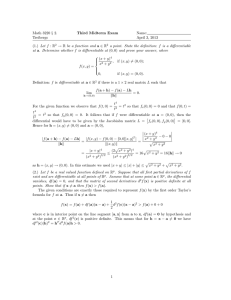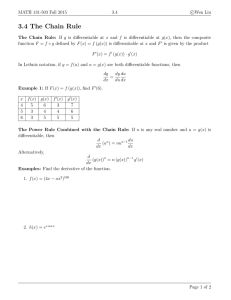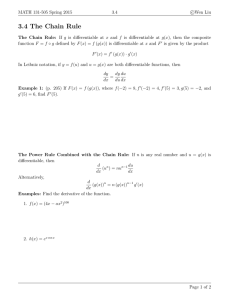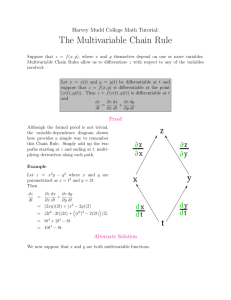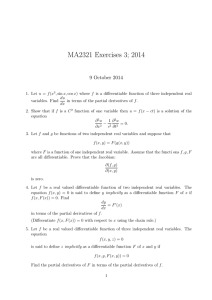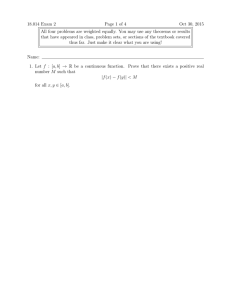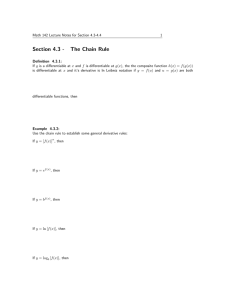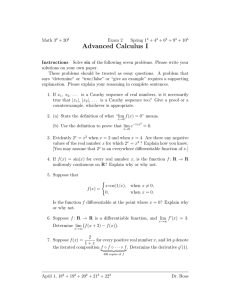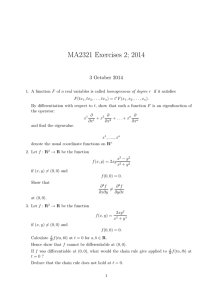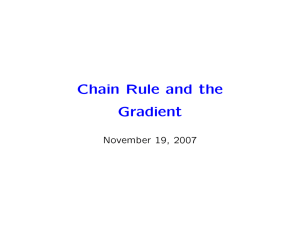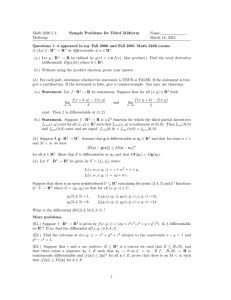Chapter 12. Partial derivatives. Section 12.5 The chain rule. dy dx
advertisement
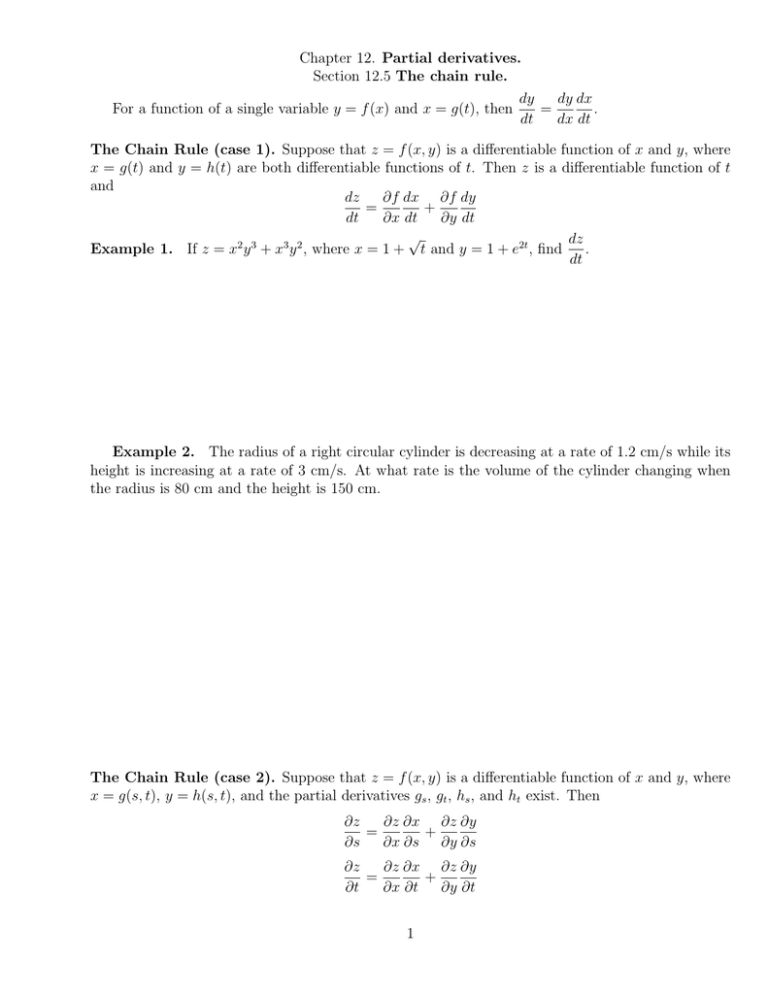
Chapter 12. Partial derivatives. Section 12.5 The chain rule. For a function of a single variable y = f (x) and x = g(t), then dy dx dy = . dt dx dt The Chain Rule (case 1). Suppose that z = f (x, y) is a differentiable function of x and y, where x = g(t) and y = h(t) are both differentiable functions of t. Then z is a differentiable function of t and dz ∂f dx ∂f dy = + dt ∂x dt ∂y dt √ dz . Example 1. If z = x2 y 3 + x3 y 2 , where x = 1 + t and y = 1 + e2t , find dt Example 2. The radius of a right circular cylinder is decreasing at a rate of 1.2 cm/s while its height is increasing at a rate of 3 cm/s. At what rate is the volume of the cylinder changing when the radius is 80 cm and the height is 150 cm. The Chain Rule (case 2). Suppose that z = f (x, y) is a differentiable function of x and y, where x = g(s, t), y = h(s, t), and the partial derivatives gs , gt , hs , and ht exist. Then ∂z ∂x ∂z ∂y ∂z = + ∂s ∂x ∂s ∂y ∂s ∂z ∂z ∂x ∂z ∂y = + ∂t ∂x ∂t ∂y ∂t 1 Example 3. If z = x2 sin y, where x = s2 + t2 and y = 2st, find ∂z ∂z and . ∂s ∂t The Chain Rule (general version). Suppose that u is a differentiable function of the n variables x1 , x2 , ..., xn and each xj is a function of the m variables t1 , t2 , ..., tm such that all partial derivatives ∂xj /∂ti exist (j = 1, 2, ..., n, i = 1, 2, ..., m). Then u is a function of t1 , t2 , ..., tm and ∂u ∂x1 ∂u ∂x2 ∂u ∂xn ∂u = + + ... + ∂ti ∂x1 ∂ti ∂x2 ∂ti ∂xn ∂ti for each i = 1, 2, ..., m. x ∂z ∂z ∂z Example 4. If z = , where x = rest , y = rset , find , , and . y ∂r ∂s ∂t 2 Implicit differentiation. We suppose that an equation of the form F (x, y) = 0 defines y implicitly as a differentiable function of x, that is y = f (x), where F (x, f (x)) = 0 for all x in the domain of f . In order to find dy/dx, we differentiate both parts of the equation F (x, y) = 0 with respect to x: d d (F (x, y)) = (0) dx dx ∂F dx ∂F dy + =0 ∂x dx ∂y dx Since dx = 1, then dx ∂F dy = − ∂x ∂F dx ∂y Example 5. Find dy/dx if x2 − xy + y 3 = 8. Suppose that z is given implicitly as a function z = f (x, y) by an equation of the form F (x, y, z) = 0. If F is differentiable and fx and fy exist, then we can use the Chain Rule to differentiate the equation F (x, y, z) = 0 as follows ∂F ∂x ∂F ∂y ∂F ∂x + + =0 ∂x ∂x ∂y ∂x ∂x ∂x Since ∂y ∂x = 1 and = 0, then ∂x ∂x ∂F ∂F ∂z + =0 ∂x ∂z ∂x or ∂F ∂F ∂z ∂z ∂y = − ∂x =− ∂F ∂F ∂x ∂y ∂z ∂z Example 6. Find ∂z/∂x and ∂z/∂y if xyz = cos(x + y + z). 3
